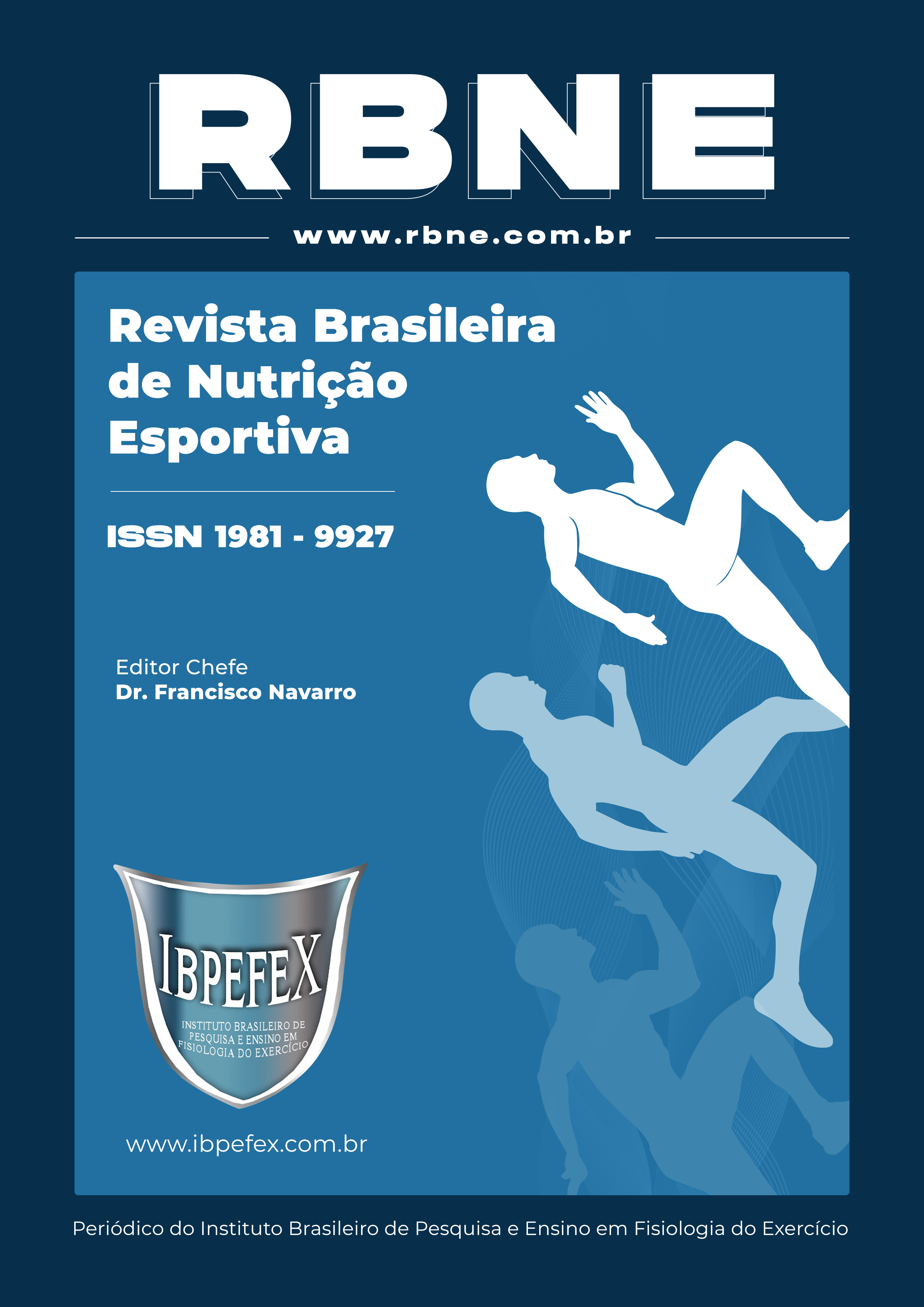The Role of excessive physical activity in the bone health of women diagnosed with eating disorders
Abstract
Introduction and aims. There are still few studies that have evaluated the relationship between eating disorders, excessive physical activity and bone health in women with anorexia nervosa (AN) and bulimia nervosa (BN). Our study aimed to evaluate the impact of excessive physical activity on the bone health of women diagnosed with AN or BN. Materials and methods. This is a cross-sectional survey in a public specialized hospital referral service for eating disorders, involving women diagnosed with AN or BN. We measured anthropometric data to calculate the Body Mass Index. Eating behavior was measured using the Eating Disorder Examination Questionnaire. Blood samples were collected to assess the serum vitamin D levels of the participants. Physical activity status was self-reported. Bone mineral density using dual-energy X-ray absorptiometry. Results. Patients with AN had longer duration of amenorrhea and had significantly lower Body Mass Index values. Aerobic exercises were predominant in both groups (AN and BN), however women with BN presented a higher frequency of aerobic exercises and also of bodybuilding practice (p<0.05). In both groups, women who practiced aerobic exercise for less than 300 minutes per week had higher bone mineral density. Conclusion. The excessive practice of physical activity, especially in aerobic exercises, had a negative impact on the bone mineral density of women diagnosed with AN or BN.
References
-Calugi, S.; Sartirana, M.; Misconel, A.; Boglioli, C.; Dalle Grave, R. Eating disorder psychopathology in adults and adolescents with anorexia nervosa: A network approach. International Journal of Eating Disorders. Vol. 53. Num. 5. 2020. p. 690-701. https://doi.org/10.1002/eat.23270
-Drabkin, A.; Rothman, M.S.; Wassenaar, E.; Mascolo, M.; Mehler, P.S. Assessment and clinical management of bone disease in adults with eating disorders: A review. Journal of Eating Disorders. Vol. 5. Num. 1. 2017. p. 42. https://doi.org/10.1186/s40337-017-0172-0
-Hirschberg, A.L. Amenorrhea in Eating Disorders. In Amenorrhea: Volume 10: Frontiers in Gynecological Endocrinology. Cham: Springer International Publishing. 2023. p. 35-51.
-Indirli, R.; Lanzi, V.; Mantovani, G.; Arosio, M.; Ferrante, E. Bone health in functional hypothalamic amenorrhea: What the endocrinologist needs to know. Frontiers in Endocrinology, 2022. p. 2512. https://doi.org/10.3389/fendo.2022.946695
-Lambrinoudaki, I.; Papadimitriou, D. Pathophysiology of bone loss in the female athlete: Bone loss in the female athlete. Annals of the New York Academy of Sciences. Vol. 1205. Num. 1. 2010. p. 45-50. https://doi.org/10.1111/j.1749-6632.2010.05681.x
-Mathisen, T.F.; Rosenvinge, J.H.; Friborg, O.; Vrabel, K.; Bratland‐Sanda, S.; Pettersen, G.; Sundgot‐Borgen, J. Is physical exercise and dietary therapy a feasible alternative to cognitive behavior therapy in treatment of eating disorders? A randomized controlled trial of two group therapies. International Journal of Eating Disorders. Vol. 53. Num. 4. 2020. p. 574-585. https://doi.org/10.1002/eat.23228
-Melin, A.; Torstveit, M.K.; Burke, L.; Marks, S.; Sundgot-Borgen, J. Disordered eating and eating disorders in aquatic sports. International Journal of Sport Nutrition and Exercise Metabolism. Vol. 24. Num. 4. 2014. p. 450-459. https://doi.org/10.1123/ijsnem.2014-0029
-Meyer, C.; Taranis, L.; Goodwin, H.; Haycraft, E. Compulsive exercise and eating disorders. European Eating Disorders Review. Vol. 19. Num. 3. 2011. p. 174-189. https://doi.org/10.1002/erv.1122
-Nitsch, A.; Dlugosz, H.; Gibson, D.; Mehler, P. S. Medical complications of bulimia nervosa. Cleveland Clinic Journal of Medicine. Vol. 88. Num. 6. 2021. p. 333-343. https://doi.org/10.3949/ccjm.88a.20168
-Peñas-Lledó, E.; Vaz Leal, F.J.; Waller, G. Excessive exercise in anorexia nervosa and bulimia nervosa: Relation to eating characteristics and general psychopathology: Excessive Exercise. International Journal of Eating Disorders. Vol. 31. Num. 4. 2002. p. 370-375. https://doi.org/10.1002/eat.10042
-Powers, P.S. Osteoporosis and eating disorders. Journal of Pediatric and Adolescent Gynecology. Vol. 12. Num. 2. 1999. p. 51-57. https://doi.org/10.1016/S1083-3188(00)86626-7
-Solmi, F.; Hotopf, M.; Hatch, S.L.; Treasure, J.; Micali, N. Eating disorders in a multi-ethnic inner-city UK sample: Prevalence, comorbidity and service use. Social Psychiatry and Psychiatric Epidemiology. Vol. 51. Num. 3. 2016. p. 369-381. https://doi.org/10.1007/s00127-015-1146-7
-Strock, N.C.A.; Souza, M.J.; Williams, N.I. Eating behaviours related to psychological stress are associated with functional hypothalamic amenorrhoea in exercising women. Journal of Sports Sciences. Vol. 38. Num. 21. 2020. p. 2396-2406. https://doi.org/10.1080/02640414.2020.1786297
-Sundgot-Borgen, J.; Bahr, R.; Falch, J.A.; Schneider, L.S. Normal bone mass in bulimic women. The Journal of Clinical Endocrinology & Metabolism. Vol. 83. Num. 9. 1998. p. 3144-3149. https://doi.org/10.1210/jcem.83.9.5085
-Todd, J.J.; Pourshahidi, L.K.; McSorley, E.M.; Madigan, S.M.; Magee, P.J. Vitamin d: Recent advances and implications for athletes. Sports Medicine. Vol. 45. Num. 2. 2015. p. 213-229. https://doi.org/10.1007/s40279-014-0266-7
-WHO. World Health Organization. Physical status: The use of and interpretation of anthropometry, Report of a WHO Expert Committee. World Health Organization. 1995.
-WHO. World Health Organization. scientific group on the assessment of osteoporosis at primary health care level. In Summary meeting report. 2004.
-Zipfel, S.; Giel, K.E.; Bulik, C.M.; Hay, P.; Schmidt, U. Anorexia nervosa: Aetiology, assessment, and treatment. The Lancet Psychiatry. Vol. 2. Num. 12. 2015. p. 1099-1111. https://doi.org/10.1016/S2215-0366(15)00356-9
Copyright (c) 2024 Maxsuel Pinheiro da Silva, Jionocley Viana dos Santos, Luan Lício Lima de Souza, Myllena Santos Souza, José Reginaldo Alves de Queiroz Júnior, Jarson Pedro da Costa Pereira

This work is licensed under a Creative Commons Attribution-NonCommercial 4.0 International License.
Authors who publish in this journal agree to the following terms:
- Authors retain the copyright and grant the journal the right of first publication, with work simultaneously licensed under the Creative Commons Attribution License BY-NC which allows the sharing of the work with acknowledgment of the authorship of the work and initial publication in this journal.
- Authors are authorized to enter into additional contracts separately for non-exclusive distribution of the version of the work published in this journal (eg, publishing in institutional repository or book chapter), with acknowledgment of authorship and initial publication in this journal.
- Authors are allowed and encouraged to post and distribute their work online (eg, in institutional repositories or on their personal page) at any point before or during the editorial process, as this can bring about productive change as well as increase impact and impact. citation of published work (See The Effect of Free Access).






